
Garden Allies: Homopterans
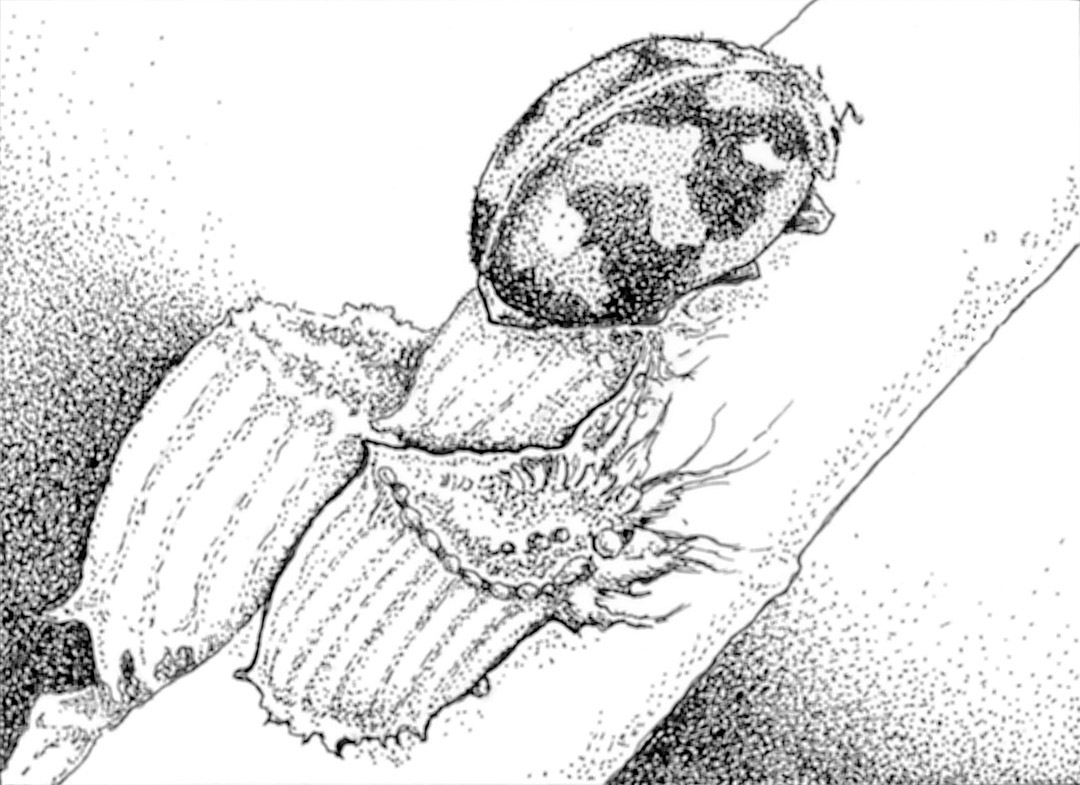
Contributor

Curious Creatures—Unlikely Allies
Homopterans, a conglomeration of loosely related families within the order Hemiptera (see Pacific Horticulture, July 2010), have played prominent roles in human history. The cochineal scale insect (Dactylopius coccus) was the only good source of red coloring (carmine dye) for clothes and food, until synthetic alizarin was invented in the late nineteenth century. Carmine dye was exported to Europe from South America and used to color fabric for royal clothing, religious vestments, and the infamous British “red coats.” More recently, health concerns over the use of synthetic colorants have increased the use of carmine dye in foods and cosmetics. A related group of insects (Coccoidea) includes lac scales, the source of shellac, a well-known wood finish. Before the advent of vinyl, records were pressed from shellac, and the first plastic, Bakelite, was developed as a replacement for shellac products. The bible’s manna from heaven is thought to be the sugary excreta (honeydew) of a homopteran.
Of course, not all homopterans serve useful roles; many species are among our most reviled insect pests. The advent of modern biological control followed the accidental introduction of cottony cushion scale (Icerya purchasi) from Australia, which nearly devastated the California citrus industry in the late nineteenth century. Charles Valentine Riley, later a US Department of Agriculture entomologist and first curator of insects at the Smithsonian Institution, had the bright idea to search for natural enemies in the scale’s homeland. He introduced the Australian vedalia beetle (Rodolia cardinalis) and a parasitoid fly (Cryptochaetum iceryae) to California citrus groves; both have effectively controlled the pest ever since.
Not Popular with Gardeners
Many gardeners would be more than pleased to see homopterans exterminated, but, without them, many beneficial insects would go extinct, and the food web on which we all depend would be severely disrupted. Many species of lady beetles, for instance, rely on homopterans as a food source. Lacewings, parasitoid wasps, syrphid flies, and other insects that rely on homopterans are a critical part of the food web, and many fish, amphibians, and birds rely on insects for all or part of their diet. Hummingbirds are welcome garden guests who gladly feast on the aphids they find in my garden when nestlings need feeding.
Inviting homopterans into the garden as allies to support the food web requires a bit of planning in order to maintain an attractive landscape. Understanding basic homopteran life history can be helpful in making good landscape choices. Homopterans are herbivorous, have piercing/sucking mouthparts that cause damage to plants, and sometimes serve as disease vectors. In response, plants have evolved numerous defenses, such as sticky hairs, waxy cuticles, and toxic compounds; some even produce hormones that control homopteran growth; the carminic acid produced by cochineal insects, and from which carmine is extracted, is produced as a defense against predation. Homopterans have adapted to overcome certain plant defenses. The result is an evolutionary “arms race” in which each organism is adapting in response to the other. The result is that many homopterans are host specific.
Knowing that most aphids are plant species, genus, or family specific (green peach aphids are a notable exception) allows for better control over where aphids are likely to appear in a garden. Milkweed aphids (Aphis nerii), for example, are easily tolerated by milkweed plants (Asclepias spp.) and do not attack anything else except oleander (Nerium oleander). Milkweed is easily tucked into a garden corner, especially in wild and native gardens. Milkweed aphids provide an alternate source of food for predators and parasitoids when aphid populations are low on other plants, such as field crops or roses. Milkweed aphids are golden with black cornicles (the tubes through which honeydew is excreted); to this insect-lover, they are quite attractive under a magnifying glass.

When Control Is Needed
In many domesticated plants, defenses against insect pests have been bred out (the accidental result of selecting for traits we like, such as color or size), and homopteran pest outbreaks may result, especially in monoculture plantings. Homopterans (and other hemiptera) are difficult to kill with most pesticides, as they bypass foliage-applied poisons by inserting their piercing mouthparts directly into plant tissue. However, on rosebuds, broccoli, and citrus, homopterans clearly have to go. With aphids, an assertive spray from a hose or a bit of insecticidal soap will do the trick. Scale insects on citrus can be smothered with horticultural oil; with patience, they can often be reined in by controlling the ants that “farm” them and allowing natural predators to control the population. On end-of-season sunflowers at the back of the vegetable patch, an aphid population can be an asset to the garden, as they allow numerous species of beneficial insects to produce an overwintering generation. Attention to good cultural practices can help the gardener avoid many homopteran problems; for instance, avoiding excessive nitrogen fertilizers reduces the amount of soft, succulent new growth.
In the long run, encouraging biodiversity in the garden decreases the likelihood of outbreaks needing attention and allows us to focus on aspects of gardening more interesting than pest management. As a bonus, the garden will be filled with interesting insects to observe as they go about their business. Cicadas may not be considered an ally to some gardeners, and may cause twig damage when laying eggs, but summer without the song of the cicada is simply unimaginable.

In a Nutshell:
Popular Name:
Homopterans: aphids, scale insects, mealybugs, whiteflies, cicadas, planthoppers, treehoppers, froghoppers.
Scientific Name:
Order: Hemiptera, previously divided into two suborders, Heteroptera (different-winged) and Homoptera (same-winged). Modern taxonomic study has revealed that the Heteroptera are descended from a common ancestor, but the Homoptera are not, and this suborder is no longer used in scientific literature. It is still useful, however, to discuss these families together, as they share similar life histories.
Common Garden Genera:
Aphids (Aphididae), mealybugs (Pseudococcidae), whiteflies (Aleyrodidae), cicadas (Cicadidae), treehoppers (Membracidae), and spittlebugs (Cercopidae), psyllids (Psyllidae), and leafhoppers (Cicadellidae). Scale insects and planthoppers both include several families.
Distribution:
Everywhere! Many are specialists, found on specific host plants.
Life Cycle:
Hemimetabolous. Nymphs resemble adults. In winged species, only adults have wings. Some homoptera reproduce through parthenogenesis, and do not require males for reproduction.
Appearance:
The mouthparts (rostrum) rise from the rear of the head (in Heteroptera, from the front of the head). Wings, when present, are membranous, and usually held roof-like over the body when at rest. Homopterans include many bizarre forms, such as thorn-mimic membracids, and the tropical lanternflies (Fulgoridae).
Life Span:
Many have a life span of only a few days, with several generations in a year. Some, such as cicadas, may take as long as seventeen years to develop.
Diet:
All homoptera are herbivorous. They are either phloem feeders, xylem feeders, or can puncture individual plant cells.
Favorite plants:
Homoptera species are often specialists, attacking only a narrow range of plant species.
Benefits:
Homopterans are food for other insects, fish, amphibians, and birds (many birds are insectivores in at least some stages of life)
Problems:
May cause damage to plants and serve as disease vectors
Interesting facts:
Large species of cicadas spend many years underground as root-feeding larvae. It takes so long for them to reach maturity because they are xylem feeders, a nutritionally poor source of food.
Sources:
Homopterans are present in all gardens.
More information:
Other info:
https://en.wikipedia.org/wiki/Chochineal
https://en.wikipedia.org/wiki/Shellac
https://www.cirrusimage.com/homoptera.htm. Features beautiful images and additional information.
https://www.ipm.ucdavis.edu/PMG/PESTNOTES/pn74140.html. When homopterans are creating problems, this is a useful reference on natural enemies.
Share:
Social Media
Garden Futurist Podcast
Most Popular
Videos
Topics
Related Posts

Ground Up Science for Greener Cities with Garden Futurist Dr. Alessandro Ossola
Spring 2023 Listen to the Podcast here. Alessandro Ossola is a scientist who gets very excited about the challenge of climate change allowing for an

Readying Urban Forests for Climate Realities with Garden Futurist Dr. Greg McPherson
Winter 2023 Listen to the Podcast here. “Going from the mow and blow to a more horticulturally knowledgeable approach to maintaining the landscape. And that

January Showers Bring February flowers…
Fall 2022 It may not quite have the same ring to it as the old English proverb, but it has a lot more truth to

Low Maintenance Gardens – Better for Pollinators and People
Autumn 2022 “I come out every day. It’s therapy, my meditation.” Janet’s young garden transformed from overgrown, invasive plants to mostly natives. The dailiness of


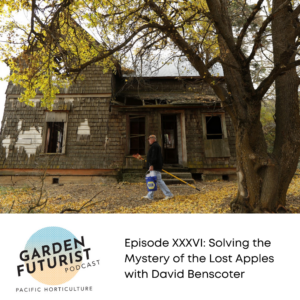

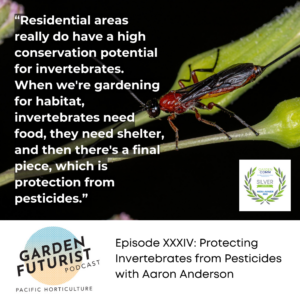

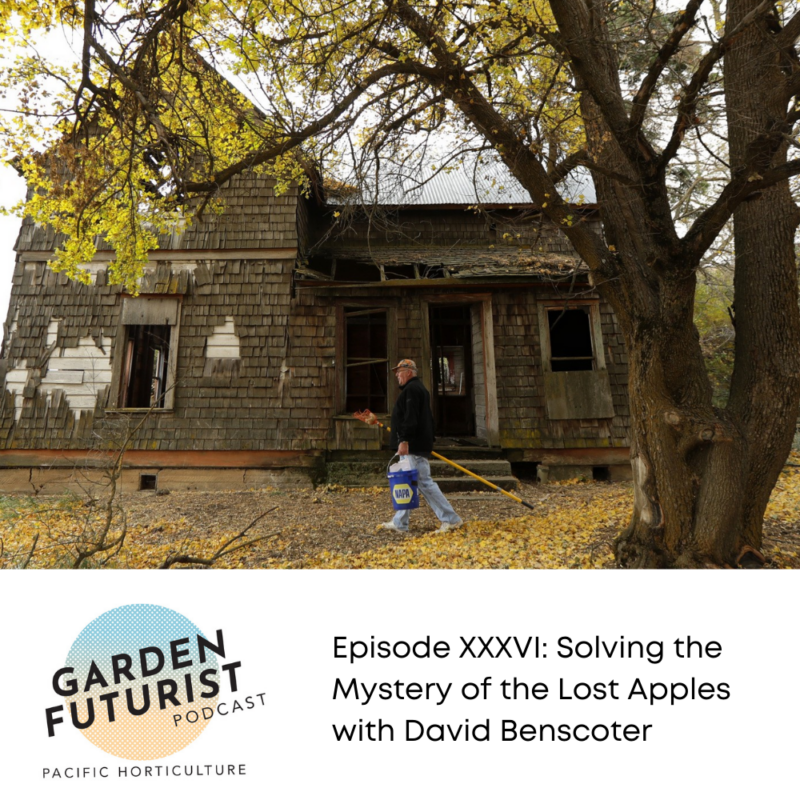
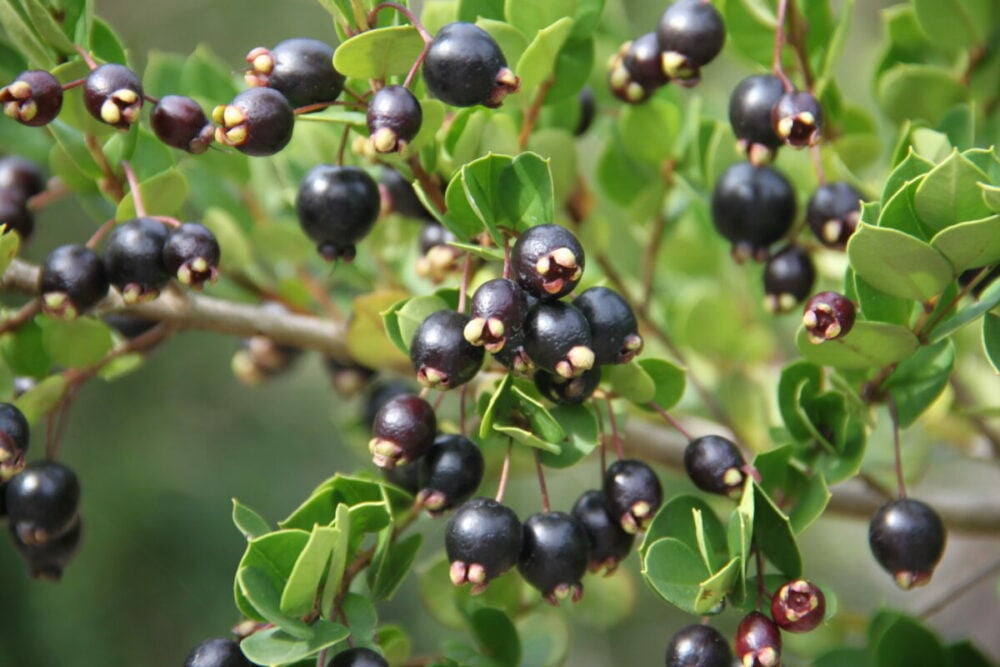



Responses